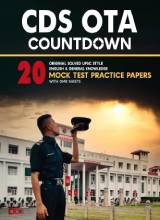Types Of Missile Systems Explained – Part 1
This article is aimed at giving you details about concept of missiles and types of missiles are there.
Types of Missiles
-
Conventional Guided Missile
-
Cruise Missiles
-
Ballistic missiles
This will be a 4 part series where part 1, 2 and 3 will be dedicated to Conventional Guided Missiles, Cruise Missiles and Ballistic Missiles respectively. These will also include details of missile India possess of certain type. Part 4 will be about some major missile systems of the world and will also have the differentiation of missile from a rocket.
Conventional Guided Missiles
These is the basic category. All guided missiles fall into this. They are further divided into categories based on their usage eg. anti-satellite missile, anti-tank missile or based on where they are fired from and where their target is, like air-to-air missile, air-to-surface missile. Conventional missiles are also classified into cruise missiles and ballastic missiles depending upon how they work. You will read about that in next parts.
-
Air-to-air missile
Astra is an all weather beyond-visual-range air-to-air missile developed by the Defence Research and Development Organisation, India. It is the first air-to-air missile developed by India. It features mid-course inertial guidance with terminal active radar homing. Astra is designed to be capable of engaging targets at varying range and altitudes allowing for engagement of both short-range targets at a distance of 20 km (12 mi) and long-range targets up to a distance of 80 km (50 mi). Astra has been integrated with Indian Air Force's Sukhoi Su-30MKI and will be integrated with Dassault Mirage 2000 and Mikoyan MiG-29 in the future.
-
Air-to-surface missile
Air-to-surface missiles are guided missiles designed to be carried and launched by aircraft and helicopters against ground targets. Generally these targets are land-based, but can also include targets at sea such as ships.
-
Submarine launched missile
Sagarika, also known by the code names K-15 or B-05, is a nuclear-capable submarine-launched ballistic missile with a range of 750 kilometres (466 mi). It belongs to the K Missile family and forms a part of India's nuclear triad, and will provide retaliatory nuclear strike capability.
-
Anti Satellite missile
India has recently test fired this missile under Mission Shakti. It is capable of tracking and destroying any satellite orbiting the earth.
-
Anti-ship missile
Brahmos supersonic cruise missile is becoming the primary anti-ship missile of the Indian Navy.
-
Anti-tank guided missile
The Nag missile is an Indian third generation "fire-and-forget" anti-tank guided missile. It is an all weather, top attack missile with a range of 3 to 7 km. It is being developed by India's Defence Research and Development Organisation (DRDO) under the Integrated Guided Missile Development Program and is manufactured by Bharat Dynamics Limited.
As of 2017, the Nag missile is solely operated from the NAMICA ATGM carrier, a tank destroyer based on the BMP-2 platform The Nag missile costs about $500,000 USD per unit and has a single-shot hit probability of 0.77.
-
Surface-to-Air Missile
Trishul is a short range surface-to-air missile developed in India. It was developed by Defence Research and Development Organisation as a part of the Integrated Guided Missile Development Program. It can also be used as an anti-sea skimmer from a ship against low flying attacking missiles.
-
Surface-to-Surface Missile
Prithvi is a tactical surface-to-surface short-range ballistic missile (SRBM) developed by DRDO of India under the Integrated Guided Missile Development Program (IGMDP). It is deployed by India's Strategic Forces Command.
The Prithvi missile project encompassed developing three variants for use by the Indian Army, Indian Air Force and the Indian Navy. The initial project framework of the Integrated Guided Missile Development Program outlines the variants in the following manner
-
Prithvi I (SS-150) – Army version (150 km (93 mi) range with a payload of 1,000 kg (2,200 lb))
-
Prithvi II (SS-250) – Air Force version (350 km (220 mi) range with a payload of 500 kg (1,100 lb))
-
Prithvi III (SS-350) – Naval version (350 km (220 mi) range with a payload of 1,000 kg (2,200 lb))
Agni-VI is an intercontinental ballistic missile being developed by the DRDO for the use of the Indian Armed Forces Strategic Forces Command.
Some other categories may include :
-
Land-attack missile
-
Shoulder-launched missiles
I will upload the other parts soon. If you have any views regarding the article, do let me know in the comments.
Stay tuned to DDE for m
Jai Hind!






 Order Now on Amazon
Order Now on Amazon
